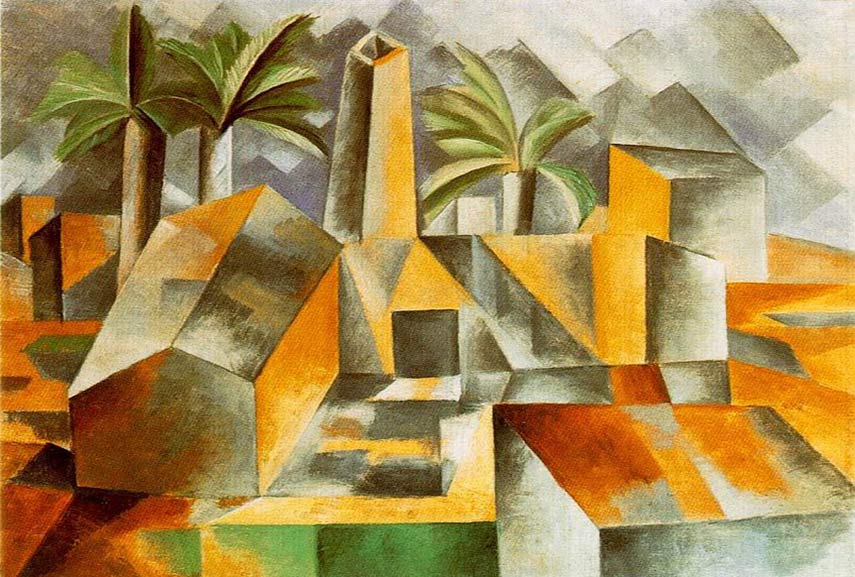

A second phase, Synthetic Cubism, remained vital until around 1919, when the Surrealist movement gained popularity. In one scheme, the first phase of Cubism, known as Analytic Cubism, a phrase coined by Juan Gris a posteriori, was both radical and influential as a short but highly significant art movement between 19 in France. Historians have divided the history of Cubism into phases. Other common threads between these disparate movements include the faceting or simplification of geometric forms, and the association of mechanization and modern life. Early Futurist paintings hold in common with Cubism the fusing of the past and the present, the representation of different views of the subject pictured at the same time or successively, also called multiple perspective, simultaneity or multiplicity, while Constructivism was influenced by Picasso's technique of constructing sculpture from separate elements. In France and other countries Futurism, Suprematism, Dada, Constructivism, Vorticism, De Stijl and Art Deco developed in response to Cubism. The impact of Cubism was far-reaching and wide-ranging. In France, offshoots of Cubism developed, including Orphism, abstract art and later Purism. A retrospective of Cézanne's paintings was held at the Salon d'Automne of 1904, current works were displayed at the 19 Salon d'Automne, followed by two commemorative retrospectives after his death in 1907. One primary influence that led to Cubism was the representation of three-dimensional form in the late works of Paul Cézanne. The movement was pioneered by Pablo Picasso and Georges Braque, and joined by Jean Metzinger, Albert Gleizes, Robert Delaunay, Henri Le Fauconnier, Juan Gris, and Fernand Léger. The term cubism is broadly associated with a variety of artworks produced in Paris ( Montmartre and Montparnasse) or near Paris ( Puteaux) during the 1910s and throughout the 1920s. Cubism has been considered the most influential art movement of the 20th century.

In Cubist works of art, the subjects are analyzed, broken up, and reassembled in an abstract form-instead of depicting objects from a single perspective, the artist depicts the subject from multiple perspectives to represent the subject in a greater context. there is very little tonal differentiation used: the general tone of works tends to be muted with a similar dark tone used across the paintings.Pablo Picasso, 1910, Girl with a Mandolin (Fanny Tellier), oil on canvas, 100.3 × 73.6 cm, Museum of Modern Art, New YorkĬubism is an early-20th-century avant-garde art movement that revolutionized European painting and sculpture, and inspired related artistic movements in music, literature, and architecture.they are painted using a limited range of dark colours (mainly blacks, greys and ochres).they appear as a busy interweaving of planes and lines with the subjects fractured, or broken up.The main characteristics of analytical cubist paintings are: Braque tended to show objects exploding out into fragments, while Picasso rendered them magnetized, with attracting forces compelling elements of the pictorial space into the center of the composition. Although Picasso and Braque's works were often similar in appearance, their separate interests showed through over time. In this phase the artists restricted their subject matter to the traditional genres of portraiture and still life and also limited their colours to earth tones and muted greys.


The name ‘analytic’ coined by Juan Gris suggests that the technique involved a close examination and analysis of objects in order to translate it into geometric shapes, angles and lines. The Analytic Cubism developed between 19.


 0 kommentar(er)
0 kommentar(er)
